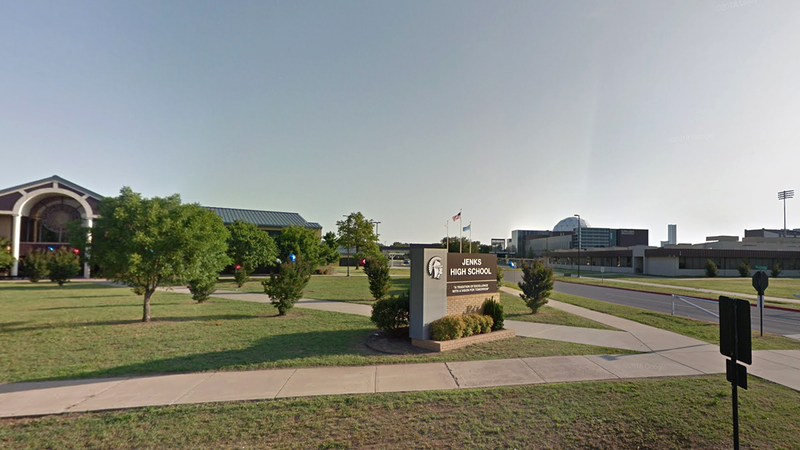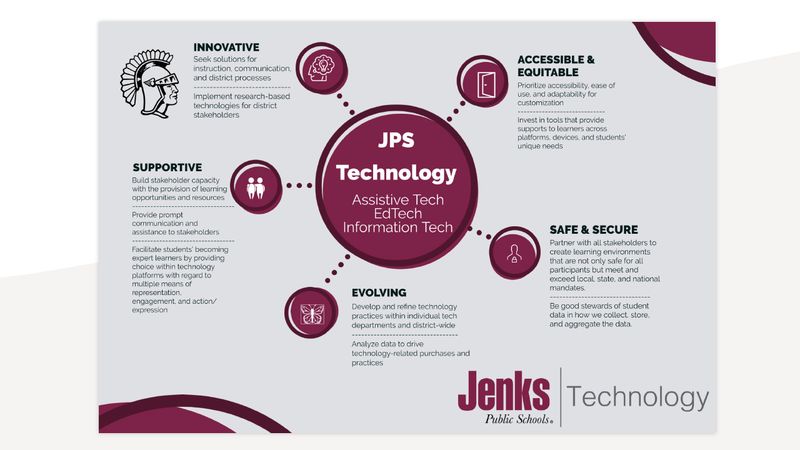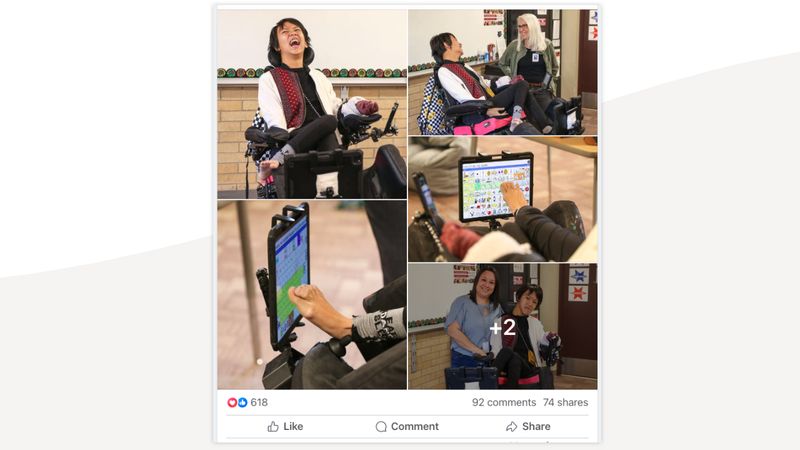Jenks Public Schools' Story


Jenks Public Schools, Jenks, Oklahoma
- suburban district
- approximately 12,519 students
- almost 1,700 employees
- engaged across 10 school sites
- student-teacher ratio of 17:1
- minority enrollment of 50%.
© 2020 Google
Since 2020, Jenks’ leadership team has been actively committed to creating and sustaining a more inclusive technology system through collaboration across all technology departments, including educational technology (EdTech), information technology (IT), and assistive technology (AT). Jenks has consistently shown exceptional, innovative progress across all practices in leadership, infrastructure, teaching, learning, and assessment frameworks.
Developing a Comprehensive Technology Plan
Throughout the district’s work with CITES and the CITES self-assessments, one of the most exemplary achievements was the development of a comprehensive educational technology plan. According to the Institute of Education Science’s (IES) National Center for Education Statistics (NCES), technology plans are central to technology deployments that include a vision of technology integration for the organization, planning for access, acquisition, and deployment of technology, and integration of methods and strategies for ensuring that technology meets the user’s need and organizational vision.
In 2020, at the beginning of the CITES project, Jenks leadership teams recognized that “while we all work hard to ensure equity across the district, there is no documented vision specific to technology, its instructional integration, its application to diverse learners, and its role in supporting best practice in the classroom.” Jenks quickly determined that creating a comprehensive district-wide technology plan was critical to student success and would also support virtual learning during the pandemic. Within the first few months, a district vision and mission were developed, followed by the evolution of a comprehensive district-wide technology plan.
Samantha Reid, the educational technology lead on the CITES district team, stated, Jenks began the self-assessment process with the leadership framework and quickly knew that the first step was a district technology plan. The team found that:
“The first questions were all about the district’s technology plan, and, we just didn't have a technology plan... We really wanted it to be something that we used to guide everything that we did, something that was a living document that we checked and updated.”
Samantha Reid Educational Technology lead on the CITES district team
After completing the leadership self-assessment, Jenks selected the areas that needed to improve based on district priorities, and developed goals for the basis of their plan. By 2021, Jenks had collected enough data from various internal and external school partners, including students and families, to begin developing a formal technology plan. Jenks also looked at the alignment of the technology plan with state and district goals and accessibility standards. Each area of the technology plan coincided with the CITES framework across leadership, assessment, teaching, learning, infrastructure, and family engagement. Within the plan, all corresponding district documents and resources were linked within the CITES practices. Once completed in 2022, Jenks identified five key areas for continued annual evaluation within the technology plan (also seen in Figure 1), which include:
- innovation to seek solutions for instruction, communication, and district processes, including implementation of research-based technologies;
- support for stakeholder capacity with the provision of learning opportunities and resources;
- evolution of adapting, developing, and refining technology practices within each individual technology department and district-wide that includes analyzing data to drive technology-related purchases and practices;
- safety and security for all stakeholders that meets and exceeds local, state, and national mandates that include being good stewards of student data; and
- accessible and equitable practices prioritizing accessibility, ease of use, and adaptability for customization, including investing in tools that support learners across various platforms, devices, and students’ unique needs.

Jenks Public Schools Technology Plan Key Focus Areas
Note: Developed by Jenks Accessibility Advocates Breaking Barriers for All (AABBA) to visualize the formal district technology plan.
Visit the Jenks Technology Plan Google DocSetting Benchmarks
In alignment with the CITES framework, Jenks included various benchmarks throughout the technology plan development process that also connected to various roles and responsibilities of the technology staff and the procurement of accessible materials and assistive technologies. Some of the benchmarks or action items within the technology plan were strategically designed to enhance current infrastructure, teaching practices, and student learning outcomes. While there is some overlap across priority areas, examples of benchmarks or processes that Jenks built within their technology plan across these areas include:
Infrastructure

- Developing a vision and mission for an inclusive and comprehensive technology system
- Developing and revising short- and long-term goals for technology at the district, school, and individual student level
- Collecting, analyzing, and distributing district-wide data through formal and informal channels
- Assessing current and upcoming curriculum adoptions for accessibility
- Updating wireless networks, district data center, access points, and bandwidth
- Requesting Accessibility Performance Reports (APR) from vendors as a part of a vendor survey
Teaching Practices

- Universal Design for Learning (UDL) credentialing for all technology leaders
- Developing professional learning opportunities in accessibility and AT
- Training in Section 508 and Web Content Accessibility Guidelines (WCAG)
- Supporting various learning management system (LMS) accessibility functions
- Incorporating AT, EdTech, and accessibility training into Professional Learning Communities (PLCs) across the district
Student Learning

- Developing resource guides and supplemental video models of technology for students and educators
- Implementing processes for educators to request updates to technology resource guides to better support their students
- Creating and sharing a “tech tip of the week” with all educators and staff to support student progress
- Including families and parent leaders in strategic planning based on lived experiences with their child
- Including students in the technology plan development process
The Jenks team recognized the amount of time and energy required to create how-to resources for accessibility features in an adopted curricular program, so a question was added to the vendor survey asking whether accessibility tutorials are available within a product or program.

Collaboration Across Technology Departments and Leadership
A struggle with many departments across the country is the siloed nature in which they work. In 2020, when Jenks began to assess their current technology systems, the team quickly realized the siloed nature of many of their departments, but also the many areas of overlap. With the guidance of Jenks Public Schools' various technology leaders on the CITES team, leadership quickly created a meaningful collaborative structure across the technology department and with leadership positions to support the development of their technology plan. From fruition to the final development stages, the Jenks CITES leadership team brought together various leaders two to three times a month to create actionable steps and a more inclusive technology system. Participants included district technology leaders (e.g., EdTech, AT, and IT), various district-wide specialists and directors, related service providers, interventionists, general and special education teachers, Title III and Title IV coordinators, the director of teaching and learning, and various site administrators (e.g., principals, assistant principals).
Communication Across School Partners

Read more about how inclusive technologies provided a life-changing advantage for Mercyexternal site in and supported Eugene to be seen and heardexternal site.
Upon completion of the CITES project and implementation of the technology plan, the leadership team was astonished to see that the prior siloed departments were now communicating simultaneously. Plus, additional resources and forms of technology were available to meet the needs of the educators and, in turn, the students. The collaboration across departments also allowed educators access to a wide net of district, regional, state, and national resources that may not have been easily accessible or identified previously.
To this day, the impact of the CITES project and the Jenks technology plan continues to positively impact the district and its internal and external school partners. Educators, students, and families can immediately access video training, information, and individualized support through the weekly tech tips, district and school websites, and social media outlets. Jenks also continues to review and revise technology choices with the input of families, educators, administrators, community partners, and students. Samantha, the district EdTech coordinator at Jenks Public Schools, highlighted that “moving forward, we now have this unified plan, and we'll be able to take data and record progress, and to reflect on everything that's been done, and be energized which all creates a positive snowball effect.”